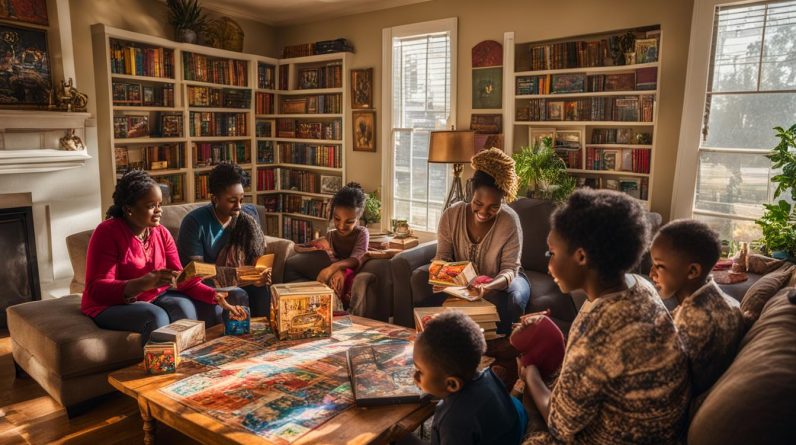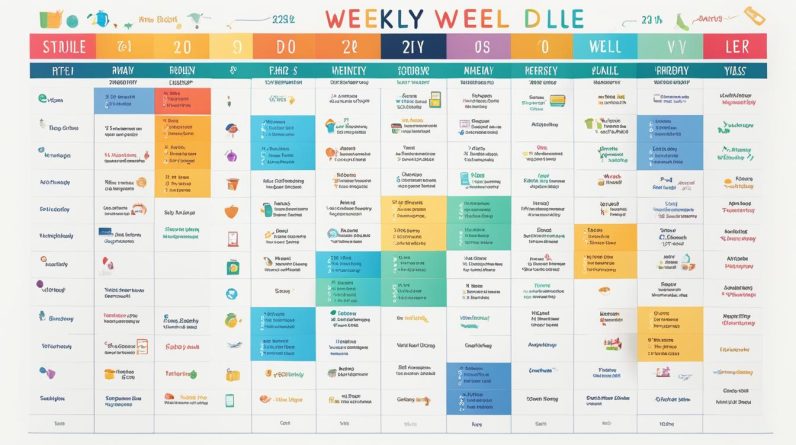If you need some home school ideas to kick-start your homeschooling journey or add some excitement to your routine, we have collected a variety of creative home schooling ideas for you and your family. From science experiments to writing activities to outdoor exploration, these ideas will inspire and engage your children in their educational journey.
Key Takeaways
- Discover creative home schooling ideas to inspire learning in your children
- Engage your children in hands-on educational activities, from science experiments to outdoor exploration
- Add excitement and variety to your homeschool routine with these innovative ideas
- Explore subjects such as science, writing, art, and character building through engaging projects
- Incorporate physical education, sports, and nature exploration into your homeschool curriculum
Top Subjects for Homeschooling Projects
Homeschooling offers the flexibility to explore a variety of subjects and projects that cater to your child’s unique interests and learning style. From hands-on science experiments to creative writing adventures, incorporating a diverse range of subjects into your homeschool curriculum will keep your child engaged and excited about learning. Here are some top subjects to consider for your homeschooling projects:
- Science: Dive into the fascinating world of science with interactive experiments that allow your child to explore and discover. From creating erupting volcanoes to investigating chemical reactions, hands-on science projects will nurture their curiosity and ignite a love for scientific inquiry.
- Mathematics: Make math come alive by incorporating practical applications and real-life problem-solving into your homeschool curriculum. Use everyday scenarios to teach concepts, play math games, or explore geometry through art projects.
- History: Travel back in time through engaging history projects that bring different eras and civilizations to life. Encourage your child to create historical artifacts, perform reenactments, or conduct research on influential historical figures.
- Language Arts: Foster a love for reading and writing by incorporating literature, storytelling, and creative writing into your homeschool routine. Encourage your child to write their own stories, poems, or even publish their work online.
- Art: Unlock your child’s creativity and self-expression through art-based projects. From painting and drawing to sculpting and mixed media, exploring different art techniques will enhance their artistic skills and boost their imagination.
Remember, the key is to tailor your homeschooling projects to your child’s interests and passions. Let them take the lead and choose subjects that excite them, ensuring a truly engaging and rewarding homeschooling experience.
“The beautiful thing about learning is that nobody can take it away from you.” – B.B. King
Homeschooling opens up a world of possibilities for hands-on, educational activities. Let your child’s passion drive their learning journey as you explore a range of subjects that captivate their curiosity.
| Subject | Highlights |
|---|---|
| Science | Interactive experiments, exploration, and discovery |
| Mathematics | Real-life problem-solving and practical applications |
| History | Hands-on projects, reenactments, and research |
| Language Arts | Literature, storytelling, and creative writing |
| Art | Painting, drawing, sculpting, and mixed media |
Creative Ideas for Homeschooling
Looking for some out-of-the-box ideas for homeschooling? This section is filled with creative homeschooling ideas that will spark your child’s imagination and make learning fun. From art projects to storytelling activities, these ideas will add a creative twist to your homeschool routine.
One creative idea for homeschooling is to incorporate hands-on learning activities. Engage your child’s senses and enhance their understanding of various subjects through interactive experiences. For example, you can create a science experiment station where they can explore different scientific concepts through exciting experiments.
Harness the power of storytelling to make learning engaging and memorable. Encourage your child to create their own stories or retell famous tales. This not only enhances their writing skills but also stimulates their creativity and critical thinking abilities.
A great way to foster creativity is through art projects. Set up an art corner or studio for your child with a variety of materials and encourage them to explore different techniques and mediums. Let their imagination run wild as they create masterpieces and express themselves through art.
Don’t forget the power of technology in today’s digital era. Explore educational apps, online courses, and virtual field trips to supplement your homeschool curriculum. Use interactive websites to teach various subjects and make learning both educational and entertaining.
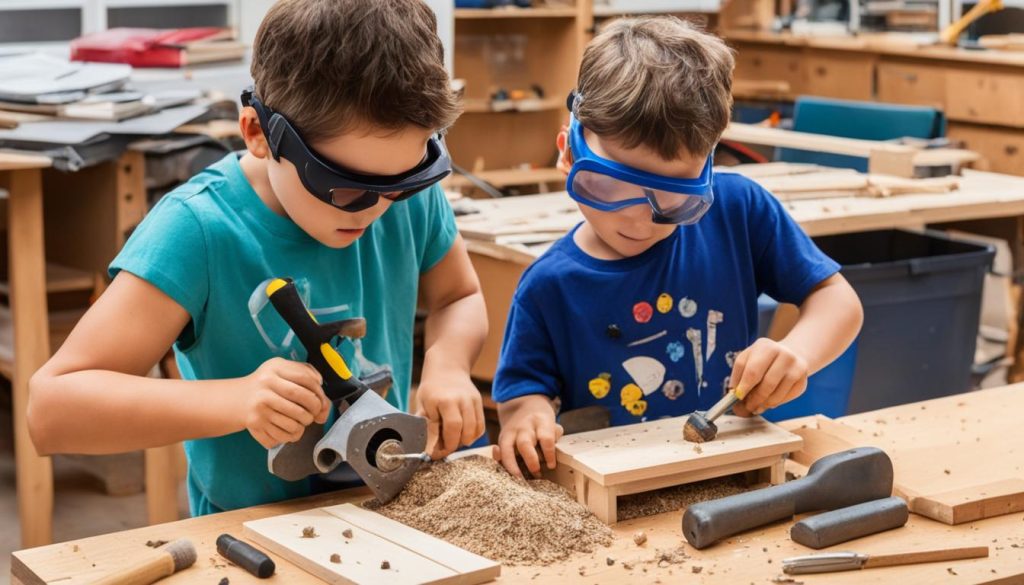
Remember, homeschooling offers the flexibility to experiment with different teaching methods and tailor them to your child’s unique learning style. By incorporating hands-on learning for homeschooling and encouraging creativity, you can create a dynamic and engaging educational experience for your child.
Character Building Activities for Homeschoolers
Character education is a vital component of homeschooling. As a homeschooling parent, you have the unique opportunity to instill important values such as kindness, empathy, and integrity in your children. By incorporating character building activities into your homeschool routine, you can create a harmonious environment and foster the development of strong character traits.
Here are some homeschooling resources and activities that will help teach your children valuable life lessons and promote positive character growth:
1. Acts of Kindness Challenge
Encourage your children to perform random acts of kindness for others. This can include writing uplifting notes, volunteering in the community, or doing kind deeds for family members. Keep a journal to record their acts of kindness and reflect on the impact they make.
2. Character-focused Read-Alouds
Select books that focus on character development and read them aloud to your children. Discuss the characters’ choices, actions, and consequences, encouraging meaningful conversations about character traits and values.
“Character is like a tree and reputation like its shadow. The shadow is what we think of it; the tree is the real thing.” – Abraham Lincoln
3. Family Values Poster
Create a poster together as a family, displaying your core values and the importance of upholding them. Hang it in a prominent place as a daily reminder of the principles you stand for.
4. Community Service Projects
Engage in community service projects as a family, such as organizing a food drive, cleaning up a local park, or participating in a charity event. These activities encourage empathy, compassion, and a sense of social responsibility.
5. Journaling Reflections
Encourage your children to keep a journal where they can reflect on their actions, thoughts, and feelings. This practice promotes self-awareness, personal growth, and the development of an inner moral compass.
6. Role-playing Scenarios
Engage in role-playing activities where your children act out scenarios that require them to make ethical decisions or solve moral dilemmas. This hands-on approach allows them to practice critical thinking, empathy, and problem-solving skills.
7. Family Meetings
Hold regular family meetings to discuss values, set goals, and solve conflicts using respectful communication. This process promotes teamwork, active listening, and cooperation within the family unit.
8. Emotional Intelligence Activities
Teach your children about emotional intelligence by engaging in activities that help them understand and manage their own emotions, as well as empathize with the feelings of others. This fosters empathy, self-control, and healthy relationships.
| Character Building Activity | Description |
|---|---|
| Acts of Kindness Challenge | Encourage random acts of kindness and keep a journal of their positive impact. |
| Character-focused Read-Alouds | Select books that focus on character development and discuss the values portrayed. |
| Family Values Poster | Create a poster displaying your core values and hang it as a visual reminder. |
| Community Service Projects | Engage in volunteer work or organized projects that serve the community. |
| Journaling Reflections | Encourage reflective journaling to promote self-awareness and personal growth. |
| Role-playing Scenarios | Act out moral dilemmas to practice critical thinking and problem-solving skills. |
| Family Meetings | Hold regular meetings to discuss values, set goals, and solve conflicts together. |
| Emotional Intelligence Activities | Engage in activities that promote self-awareness and empathy for others’ emotions. |
Fun and Educational Activities for Homeschooling
Looking for ways to make your homeschooling experience more engaging and educational? We’ve gathered a variety of ideas that will help your homeschool take off. From incorporating technology effectively to adding quizzes and movies to your lessons, these activities will enhance your child’s learning experience.
Using Technology Effectively
Incorporating technology into your homeschooling routine can open up a world of educational opportunities. Here are some ideas to get you started:
- Explore educational websites and online resources to supplement your curriculum.
- Use educational apps and platforms for interactive learning.
- Engage in virtual field trips to museums, historical sites, and national parks.
Quizzes and Interactive Assessments
Add an element of fun and challenge to your homeschooling by incorporating quizzes and interactive assessments. Here are some ideas to consider:
- Create online quizzes using platforms like Kahoot or Quizizz.
- Design scavenger hunts that require problem-solving and critical thinking skills.
- Organize trivia nights where the whole family can participate and learn together.
Movie-Based Learning
Movies can be a valuable educational tool, sparking curiosity and promoting discussion. Here’s how you can incorporate movies into your homeschooling:
- Choose documentaries or educational films that align with your curriculum topics.
- Watch a movie adaptation of a book you’re studying and compare and contrast the two.
- Discuss the themes and messages portrayed in the movie and encourage critical thinking.
Remember, homeschooling provides the flexibility to tailor your child’s education to their interests and learning style. These activities offer opportunities for hands-on learning, critical thinking, and engaging discussions. By incorporating these ideas into your homeschooling schedule, you’ll create a dynamic and enriching educational experience for your child.

Exploring Nature in Homeschooling
Nature exploration is a wonderful way for children to learn and connect with the world around them. It provides hands-on learning experiences that foster a deep understanding and appreciation for the natural environment. Incorporating nature into your homeschooling routine can unlock endless possibilities for experiential learning and creativity.
One of the simplest and most accessible ways to explore nature is through nature walks. Take your homeschoolers on a guided tour of your local park, forest, or even your backyard. Encourage them to observe and document the plants, animals, and natural phenomena they encounter. You can create a nature journal for each child to record their findings and reflect on their experiences.
“In every walk in nature, one receives far more than he seeks.” – John Muir
To further enhance their engagement with nature, you can incorporate nature-inspired art projects into your homeschooling curriculum. Encourage your children to gather natural materials such as leaves, rocks, or flowers, and use them to create unique and meaningful artwork. They can make leaf rubbings, create collages, or even use natural pigments to paint.
Another exciting activity is building a wildlife habitat in your backyard. Research the native plants and animals in your area and create a space that provides food, water, and shelter for them. This not only provides a valuable learning opportunity but also helps conserve local biodiversity.
Benefits of Nature Exploration in Homeschooling
Exploring nature in homeschooling offers a plethora of benefits for children. It allows them to:
- Develop a deep connection with the natural world
- Gain a hands-on understanding of ecological concepts
- Improve observation and critical thinking skills
- Enhance creativity and artistic expression through nature-inspired projects
- Promote physical activity and outdoor play
- Cultivate a sense of responsibility towards the environment
Nature exploration also complements various subjects such as science, geography, and even history. It provides real-life examples and experiences that make learning more meaningful and memorable.
Nature Exploration Activities for Homeschooling
| Activity | Description |
|---|---|
| Nature Walks | Guided tours of natural spaces to observe and document plants, animals, and natural phenomena. |
| Nature Journals | Recording observations, reflections, and drawings in a personal nature journal. |
| Nature-Inspired Art Projects | Creating artwork using natural materials such as leaves, rocks, or flowers. |
| Building Wildlife Habitats | Designing and constructing spaces that provide food, water, and shelter for native plants and animals. |
By incorporating nature exploration into your homeschooling routine, you can create meaningful learning experiences that foster a lifelong love for the natural world. Remember, hands-on learning in nature is just a step away from your doorstep.
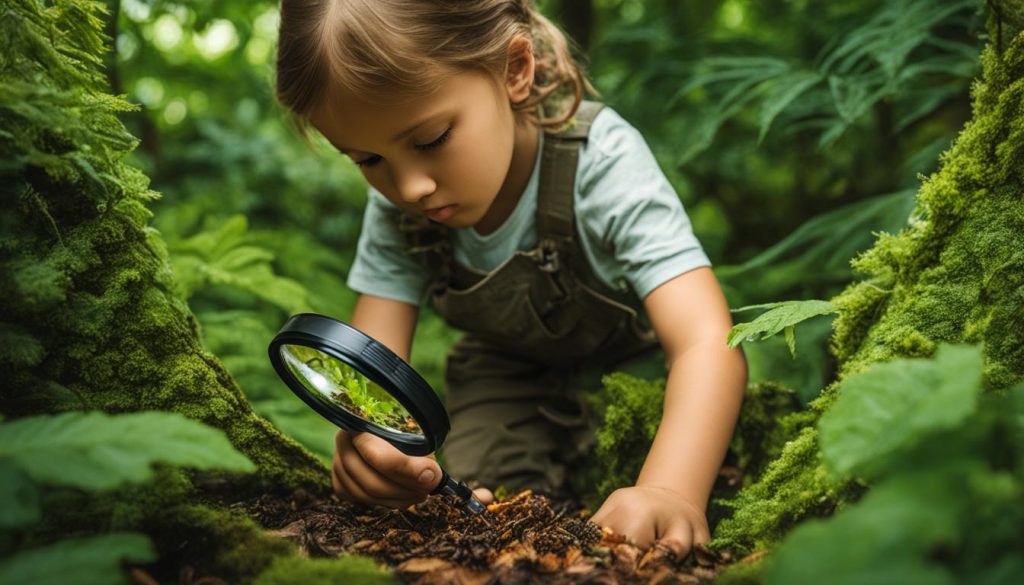
Physical Education and Sports for Homeschoolers
It’s important for homeschoolers to get moving and stay active. Engaging in physical education and sports not only promotes physical fitness but also fosters social interaction and builds teamwork skills. Here are some ideas to incorporate physical education and sports into your homeschool routine:
1. At-Home Sports Activities
Bring the excitement of sports into your homeschool with at-home activities that require minimal space and equipment. Set up a mini obstacle course in your backyard, challenge your family to a friendly game of backyard soccer or basketball, or practice coordination and agility with homemade indoor bowling using water bottles as pins and a soft ball for rolling.
2. Homeschool PE Program
Create a homeschool physical education program that suits your child’s interests and needs. Research online resources that offer structured PE lesson plans and activities specifically designed for homeschoolers. Tailor the program to include a variety of activities such as yoga, dance, aerobics, martial arts, and even virtual sports classes.
3. Virtual Sports Teams
Connect with other homeschoolers and form virtual sports teams. Participate in online sports leagues or collaborate with other families to organize friendly virtual competitions. This allows your child to interact with peers, develop sportsmanship skills, and enjoy the benefits of team sports from the comfort of home.
“Physical fitness is not only one of the most important keys to a healthy body, but it is also the basis of dynamic and creative intellectual activity.” – John F. Kennedy
By incorporating physical education and sports into your homeschool routine, you provide your children with opportunities to stay active, develop physical skills, and foster a love for fitness. Keep homeschooling exciting and energizing with these ideas!
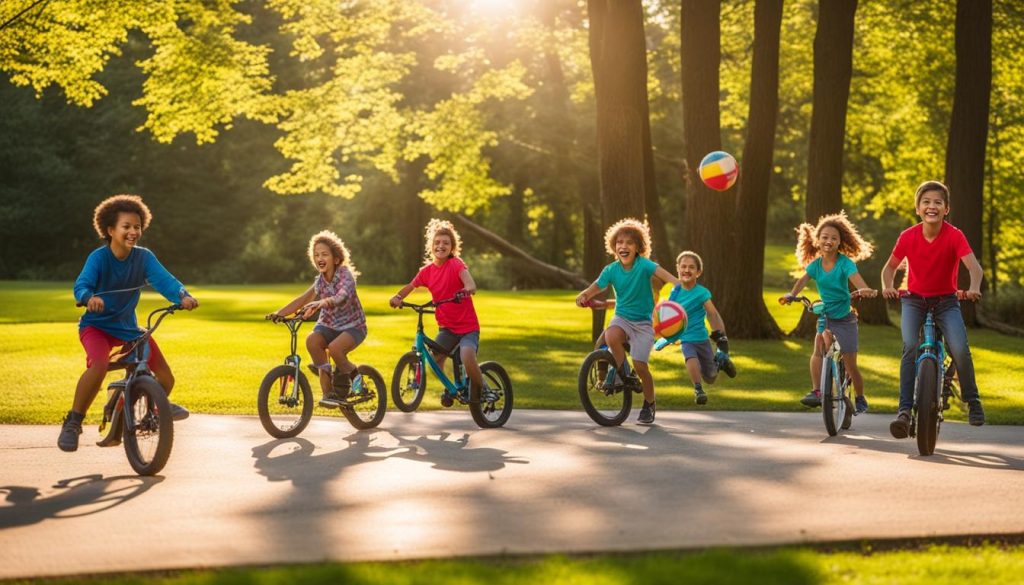
| Benefits of Physical Education and Sports in Homeschooling | Ways to Incorporate Physical Education and Sports |
|---|---|
| 1. Promotes physical fitness | 1. At-home sports activities |
| 2. Enhances social interaction | 2. Homeschool PE program |
| 3. Develops teamwork skills | 3. Virtual sports teams |
| 4. Improves coordination and agility | |
| 5. Fosters sportsmanship |
Seasonal Homeschooling Ideas
Seasonal homeschooling offers a unique opportunity to explore different themes and topics throughout the year. By incorporating seasonal activities into your homeschool routine, you can keep your homeschoolers engaged and excited about learning. Here are some homeschool resources and homeschooling schedule ideas to make the most of each season:
Summer Fun
Take advantage of the warm weather and longer days by incorporating summer-themed activities into your homeschooling. From outdoor science experiments to nature hikes, there are plenty of opportunities to learn and have fun in the sun. Encourage your homeschoolers to keep a summer journal, documenting their adventures and discoveries. Don’t forget to incorporate water play activities to beat the heat and foster creativity.
Fall Harvest
As the leaves change colors and the air becomes crisp, embrace the spirit of fall by focusing on harvest-themed projects and activities. Create a fall nature table where your homeschoolers can display their findings from nature walks, including leaves, acorns, and pinecones. Incorporate seasonal recipes into your homeschool cooking lessons, such as apple cider and pumpkin bread. Dive into literature that explores autumn themes, and encourage your homeschoolers to create their own fall-inspired artwork.
Winter Wonderland
When winter arrives, embrace the magic of the season by incorporating winter-themed activities into your homeschool routine. Explore the science behind snowflakes and frost, and conduct winter-themed experiments in your home laboratory. Dive into literature that explores winter landscapes and traditions from around the world. Encourage your homeschoolers to create winter-themed art and crafts, such as snowflake ornaments and handmade holiday cards.
Spring Awakening
As nature comes back to life and flowers bloom, take the opportunity to focus on spring-themed activities in your homeschooling. Plant a garden with your homeschoolers and learn about the life cycle of plants. Study animals and their habitats as they emerge from hibernation. Explore the wonders of spring weather, from rainbows to thunderstorms. Encourage your homeschoolers to observe and document the changes happening in nature as spring unfolds.
By incorporating these seasonal homeschooling ideas into your curriculum, you can create a dynamic and engaging learning experience for your homeschoolers throughout the year. Each season brings its own unique opportunities for exploration and discovery, making homeschooling a truly enriching experience.
Photography and Animation in Homeschooling
Photography and animation are creative and engaging ways to enhance your homeschooling curriculum. By incorporating these visual arts into your lessons, you can inspire creativity, develop technical skills, and foster a deeper understanding of the world around us. Whether your child is interested in capturing the beauty of nature through photography or bringing imaginative stories to life through animation, there is a wealth of resources available to support their learning journey.
Photography Projects
Introducing photography into your homeschooling activities can encourage your child to observe and appreciate the world with a fresh perspective. Consider assigning photography projects that align with different subjects, such as capturing the geometry of architecture for math or documenting local plant and animal species for science. You can also guide them to experiment with various photography techniques, such as perspective, lighting, and composition, to develop their artistic style.
Here are a few photography project ideas to get you started:
- Creating a photo journal that documents everyday life and events
- Exploring macrophotography by capturing close-up details of objects
- Experimenting with light painting to create unique visual effects
Animation Exercises
Animation is an exciting medium that allows homeschoolers to bring their stories, characters, and ideas to life through moving images. It nurtures creativity, problem-solving skills, and patience as students learn the step-by-step process of animating. There are various animation techniques, ranging from traditional hand-drawn animation to stop-motion using clay or objects.
Here are a few animation exercises to spark your child’s imagination:
- Creating a flipbook animation with a sequence of hand-drawn images
- Producing a stop-motion animation using modeling clay or toys
- Experimenting with digital animation software to create computer-generated animations
By incorporating photography and animation into your homeschooling routine, you provide your child with valuable opportunities for self-expression, exploration, and skill development. These visual arts can also be integrated into other subjects, such as history, literature, or social studies, to deepen understanding and encourage interdisciplinary connections.
To support your homeschooling journey, here are some online resources where you can find photography and animation tutorials, project ideas, and inspiration:
- Khan Academy: Visual Storytelling
- Bored Panda: 30 Interesting Stop Motion Animations
- TED-Ed: Animation Basics: The Art of Timing and Spacing
- Photography Icon: Online Photography Tutorials
Embrace the world of photography and animation in your homeschooling journey. Watch as your child’s creativity blossoms and their technical skills soar, all while having fun and exploring new ways of expression.
Resources for Photography and Animation
| Website | Description |
|---|---|
| Adobe Creative Cloud | Access to professional photography and animation software, including Adobe Photoshop and Adobe Animate. |
| Blender | An open-source 3D animation software that allows homeschoolers to create sophisticated animations. |
| Pixlr | A free online photo editing tool with features similar to Adobe Photoshop, perfect for beginners. |
| CreativeLive | An online learning platform offering photography and animation classes taught by industry professionals. |
Homeschooling Extracurricular Activities
Homeschooling is a wonderful opportunity to go beyond traditional academics and explore a wide range of extracurricular activities. Engaging in these activities not only provides a well-rounded education but also helps your homeschoolers discover and develop their passions and talents. From art projects to theater classes to music lessons, here are some exciting ideas for incorporating homeschooling extracurricular activities into your routine:
“Creativity takes courage.” – Henri Matisse
Visual Arts
Allow your homeschoolers to express their creativity and explore different art forms through visual arts activities. Set up an art station with various art supplies and encourage them to create paintings, drawings, collages, or sculptures. You can also introduce them to famous artists and their techniques through art history lessons.
Theater and Dramatics
Encourage your homeschoolers to unleash their inner actors and actresses by participating in theater classes or organizing small plays and skits at home. They can explore different genres, write scripts, design costumes, and perform in front of an audience, be it family members or friends.
Music Lessons
Introduce your homeschoolers to the magical world of music by enrolling them in music lessons. Whether it’s piano, guitar, violin, or singing, learning an instrument or developing vocal skills can be a fulfilling experience. Additionally, they can participate in virtual or local music recitals to showcase their progress.
Sports and Physical Activities
Engaging in sports and physical activities is essential for the overall development of homeschoolers. Encourage them to participate in sports clubs, community leagues, or informal games with friends. Additionally, you can incorporate regular physical education classes into your homeschool schedule to ensure they stay active and healthy.
Community Service
Teach your homeschoolers the importance of giving back to the community by involving them in volunteer work and community service projects. They can participate in local initiatives such as cleaning up parks, assisting at food banks, or organizing fundraisers for charitable causes.
Remember, the key is to let your homeschoolers explore their interests and engage in activities that align with their passions. These extracurricular activities will not only enhance their homeschooling experience but also contribute to their personal growth and development.
Table: Comparison of Homeschooling Extracurricular Activities
| Activity | Description | Benefits |
|---|---|---|
| Visual Arts | Engaging in various art forms such as painting, drawing, and sculpture. | Enhances creativity, self-expression, and appreciation for the arts. |
| Theater and Dramatics | Participating in theater classes or organizing plays and skits. | Develops confidence, public speaking skills, and teamwork. |
| Music Lessons | Learning to play an instrument or developing vocal skills. | Improves cognitive abilities, discipline, and self-confidence. |
| Sports and Physical Activities | Participating in sports clubs, community leagues, or regular physical education classes. | Promotes physical fitness, teamwork, and leadership skills. |
| Community Service | Involvement in volunteer work and community service projects. | Cultivates empathy, compassion, and a sense of social responsibility. |
Creating a Creative Learning Space at Home
Setting up a creative learning space at home can inspire your child’s creativity and enhance their learning experience. By dedicating a specific area in your home for homeschooling, you can create an environment that promotes focus, productivity, and imagination. Here are some tips and ideas for designing a vibrant learning space that caters to different learning styles and activities.
1. Designate areas for individual thinking and reflection
Create a calm down corner or a cozy nook where your child can retreat for quiet reflection and independent study. Fill this area with comfortable seating, pillows, and soft lighting to provide a peaceful atmosphere. Encourage your child to personalize this space with their favorite books, journals, or art supplies.
2. Incorporate collaborative learning spaces
Designate an area in your home where your child can collaborate with siblings or participate in group activities. This can be a large table, a dedicated workspace with multiple chairs, or even a floor mat. Make sure there are enough materials and resources available in this area to support teamwork and group projects.
3. Create art stations for hands-on creativity
Set up art stations with a variety of art supplies, such as paints, brushes, markers, and clay. Display your child’s artwork on the walls or a bulletin board to showcase their creativity and encourage self-expression. Consider installing a whiteboard or chalkboard for brainstorming and doodling.
4. Provide cozy reading nooks
Allocate a comfortable space for reading and independent learning. Create a cozy nook with bean bags or cushions, a bookshelf stocked with a variety of books, and good lighting. Encourage your child to explore different genres and develop a love for reading.
“A creative learning space stimulates curiosity, encourages exploration, and inspires a love for learning.” – Jane Smith
5. Set up a technology area
If your homeschooling curriculum includes online resources or educational apps, designate an area for technology. Set up a desk or table with a computer or tablet, ensuring it is placed in a well-lit area and positioned ergonomically for comfortable use.
6. Make use of wall space
Maximize wall space by incorporating educational posters, maps, charts, and calendars. These visual aids can provide quick references and serve as learning tools. Consider using a wall or bulletin board for displaying a weekly homeschooling schedule to keep your child organized.
| Learning Space Feature | Benefits |
|---|---|
| Individual thinking and reflection area | Provides a peaceful environment for focused study and personal reflection. |
| Collaborative learning spaces | Fosters teamwork, communication, and social interaction among homeschoolers. |
| Art stations | Encourages creativity, self-expression, and fine motor development. |
| Cozy reading nooks | Creates a tranquil space for reading, imagination, and independent learning. |
| Technology area | Allows for seamless integration of technology in the homeschooling curriculum. |
Remember, a creative learning space stimulates curiosity, encourages exploration, and inspires a love for learning. Customize your homeschooling environment to suit your child’s unique needs and interests, and watch as their enthusiasm for education grows.
Incorporating Movement and Mindfulness in Homeschooling
Incorporating movement and mindfulness into your homeschooling routine can have numerous benefits for your child’s learning and well-being. By providing regular physical activity breaks, active games, and mindfulness exercises, you can create a balanced and engaging learning environment.
One way to incorporate movement into your homeschooling schedule is to include yoga sessions. Yoga not only helps improve flexibility and strength but also promotes relaxation and concentration. You can find online resources that offer yoga classes specifically designed for children, making it easy to incorporate this mindful practice into your homeschool routine.
Another great way to get your homeschoolers moving is by organizing nature walks. Spending time outdoors not only allows children to connect with nature but also provides sensory experiences and opportunities for scientific exploration. Encourage your children to observe plants, animals, and natural phenomena during these walks, and engage them in discussions and activities that build their understanding of the world around them.
In addition to physical activity, incorporating mindfulness exercises can help your homeschoolers cultivate focus and manage stress. Consider incorporating short mindfulness sessions into your daily schedule, where you guide your children through activities such as deep breathing exercises, body scans, or guided visualizations. These moments of stillness and reflection can enhance their overall well-being and concentration.
FAQ
Can you provide some creative home schooling ideas for my children?
Of course! We have collected a variety of creative home schooling ideas that will inspire and engage your children in their educational journey. From science experiments to writing activities to outdoor exploration, these ideas will add excitement to your homeschool routine.
What are some top subjects to consider for my homeschool curriculum?
Homeschooling offers the flexibility to explore a variety of subjects and projects. From science experiments to creative writing, here are some top subjects to consider for your homeschool curriculum. These ideas will engage your children in hands-on, educational activities that will fuel their passion for learning.
Do you have any creative ideas to make homeschooling more exciting?
Absolutely! This section is filled with creative homeschooling ideas that will spark your child’s imagination and make learning fun. From art projects to storytelling activities, these ideas will add a creative twist to your homeschool routine.
How can I incorporate character education into my homeschooling?
Character education is an important aspect of homeschooling. This section provides ideas and resources to teach your children about kindness, empathy, and other important values. These activities will help create a harmonious homeschool environment and foster the development of strong character in your children.
How can I make my homeschooling experience more engaging with technology?
Looking for ways to make your homeschooling experience more engaging and educational? This section offers a variety of ideas that will help your homeschool take off. From using technology effectively to incorporating quizzes and movies into your lessons, these activities will enhance your child’s learning experience.
How can I incorporate nature exploration into homeschooling?
Nature exploration is a wonderful way for children to learn and connect with the world around them. This section provides ideas and activities to turn nature exploration into an educational experience. From nature walks to nature-inspired art projects, these ideas will make learning come alive for your homeschoolers.
Are there any ideas for physical education and sports in homeschooling?
It’s important for homeschoolers to get moving and stay active. This section offers ideas for incorporating physical education and sports into your homeschool routine. From at-home sports activities to creating a homeschool PE program, these ideas will keep your homeschoolers fit and energized.
How can I incorporate seasonal activities into homeschooling?
Seasonal homeschooling offers a unique opportunity to explore different themes and topics throughout the year. This section provides ideas for incorporating seasonal activities into your homeschool routine. From summer fun to Thanksgiving-themed projects, these ideas will keep your homeschoolers engaged and excited about learning.
Can you provide ideas for photography and animation in homeschooling?
Photography and animation are creative and engaging ways to enhance your homeschooling curriculum. This section offers ideas and resources for using cameras and webcams in your homeschooling activities. From photography projects to animation exercises, these ideas will inspire creativity and technical skills in your homeschoolers.
How can I incorporate extracurricular activities into homeschooling?
Homeschooling allows for flexibility in incorporating extracurricular activities. This section provides ideas for incorporating homeschooling extracurricular activities into your routine. From art projects to theater classes to music lessons, these activities will provide a well-rounded education for your homeschoolers.
How can I create a creative learning space at home for homeschooling?
Setting up a creative learning space at home can inspire your child’s creativity and enhance their learning experience. This section provides tips and ideas for creating a designated space for individual thinking and reflection, collaborative learning, and informal gatherings. From calm down corners to art stations to cozy reading nooks, these ideas will transform your home into a vibrant learning environment.
How can I incorporate movement and mindfulness into homeschooling?
Incorporating movement and mindfulness into your homeschooling routine can have numerous benefits for your child’s learning and well-being. This section provides ideas and resources for incorporating physical activity breaks, active games, and mindfulness exercises into your homeschooling schedule. From yoga sessions to nature walks to brain breaks, these activities will keep your homeschoolers engaged and focused.




